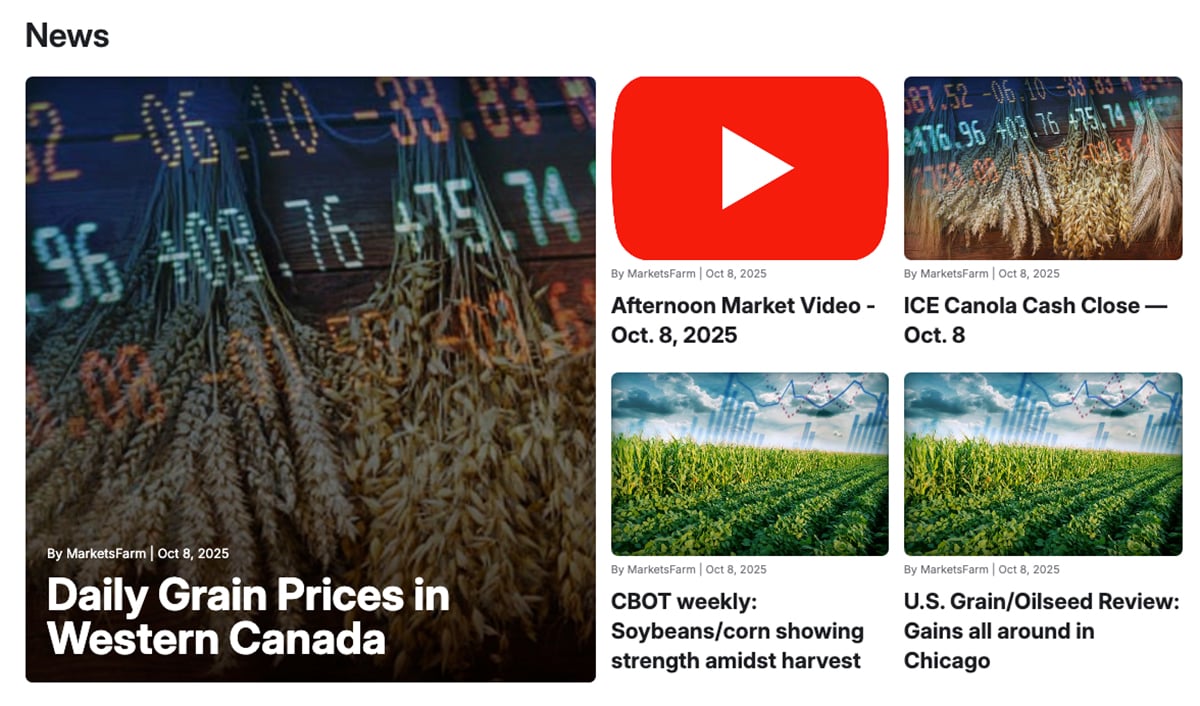This cattle market information is selected from the weekly report from Canfax, a division of the Canadian Cattlemen’s Association. More market information, analysis and statistics are available by becoming a Canfax subscriber by calling 403-275-5110 or at www.canfax.ca.
Fed market disappoints
Alberta fed cash-to-futures basis levels have ranged from -$21.50 to -$22.25 per hundredweight over the previous two weeks, the weakest since 2014.
Last week packers limited the number of cattle they were buying from each producer and in some instances didn’t bid at all. With logistic issues, packers are struggling to run at capacity.
Read Also

VIDEO: Catch up with the Western Producer Markets Desk
The Western Producer Markets Desk provides daily updates on agricultural markets, with recent video commentary including looks into canola, wheat, cattle and feed grains.
Last week, dressed sales were reported from $260-$275 per cwt. delivered, and cattle were scheduled for the week of March 14 delivery. On some sales a $2 per cwt. dressed premium was added to the negotiated sale price if the cattle graded over 70 percent AAA.
With negative feeding margins and many feedlots behind with marketing, feedlot inventories are likely becoming less current. Western Canadian steer carcass weights averaged 922 pounds. For the beginning of February, it is the second largest weight on record.
On a cash-to-cash basis, Alberta fed prices are trading at an $18+ per cwt. discount to the Nebraska market. When Alberta fed basis levels get this weak, more Canadian fed cattle usually go to the United States, but that has not been the case this year. Recent border blockades have created challenges for the industry, and the situation is ever changing in terms of what moves across international borders, whether its live cattle or boxed beef. This could be one factor limiting buying interest on Canadian fed cattle.
In Ontario, dressed sales were reported at $290 per cwt. delivered, fully steady with the previous week. Cattle were being booked for Feb. 2 delivery.
In the U.S., dressed sales in Iowa and Nebraska ranged from US$222-$227 per cwt. and live sales were reported from $140-$142.
U.S. slaughter volumes have struggled since the start of the year but are now getting back to normal. Last week’s estimated slaughter was 659,000 head.
Cow prices rise
Non-fed prices firmed higher last week on renewed trim demand and reduced offerings. D2 slaughter cow prices were almost $2 per cwt. higher at auction last week, averaging $79.40 per cwt., and D3 prices were $1.20 per cwt. higher, averaging $68.70.
Dressed cow bids realigned sharply higher last week with reports from $160-$165 per cwt. delivered. Butcher bull prices traded fully steady with the previous week, averaging $103.42 per cwt.
Dwindling forage inventory encouraged many producers to aggressively trim the cow herd earlier this year, and slaughter cow supplies should continue to tighten. Demand for trim and grind is expected to seasonally improve.
Feeder price gets boost
A softer feedgrain market tone and improved hedging opportunities from stronger cattle futures boosted feeder prices $4-$5 per cwt. higher last week. Light calves less than 500 lb. rallied $4-$5 per cwt. higher than the previous week, and middleweight 500- 700 lb. calves surged $4-$8 per cwt. higher on improved feeding margins and early grass interest. Larger feeders heavier than 800 lb. were generally $3.50 per cwt. stronger than the previous week on tightening supplies.
Auction volumes eased 16 percent lower than the previous week to 23,250 head and were 51 percent larger than the same week last year. Year-to-date auction volumes of 156,849 head are 19 percent and 21 percent larger than year ago and the five-year historic average, respectively.
Weekly feeder exports to the U.S. continued to track significantly larger than a year ago and for the week ending Jan. 29 totalled 4,368 head. Year-to-date feeder exports were up 239 percent from the same week last year at 13,838 head.
Feed availability and feeding costs will continue to influence market prices. The feedgrain supply chain is vulnerable to disruptions but has improved for now, though late winter forage inventories are dwindling.
Recent cattle board strength has improved risk management opportunities and slightly softer feedgrain prices have improved feeding margins.
U.S. cutouts pressured
In U.S. beef trade, buyer price resistance and aggressive beef harvests continued to pressure cut-out values. Choice traded more than US$6.50 per cwt. lower than the previous week to average $274.82, and Select dipped $7.50 per cwt. lower to average $268.95.
Anticipated large slaughter levels combined with sluggish beef demand are expected to pressure cut-out values lower in the short term, but upcoming spring buying should improve demand.
















